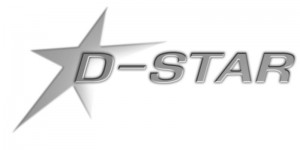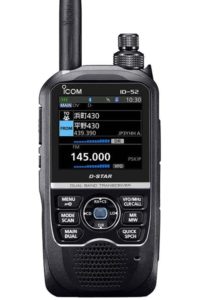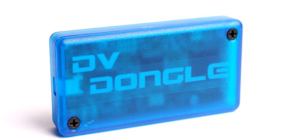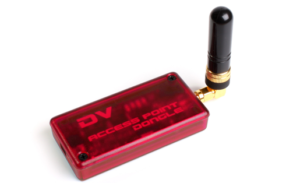 D-STAR (Digital Smart Technologies for Amateur Radio) is an FDMA and GMSK digital voice and data protocol specification developed in the late 1990s by the Japan Amateur Radio League for amateur radio. There are newer digital radio modes used by amateurs, D-STAR was the first packet-based standard designed and widely used specifically for amateur radio.
D-STAR (Digital Smart Technologies for Amateur Radio) is an FDMA and GMSK digital voice and data protocol specification developed in the late 1990s by the Japan Amateur Radio League for amateur radio. There are newer digital radio modes used by amateurs, D-STAR was the first packet-based standard designed and widely used specifically for amateur radio.
Digital voice modulation uses less bandwidth than older analog voice modes such as AM and FM. The quality of the data received is also better than an analog signal at the same signal strength, as long the signal is above a minimum threshold, and there is no Multipath propagation.
D-STAR compatible radios are available for HF, VHF, UHF, and microwave amateur radio bands. In addition to the over-the-air protocol, D-STAR also provides specifications for network connectivity, enabling D-STAR radios to be connected to the Internet or other networks, allowing streams of voice or packet data to be routed via amateur radio (Wikipedia/more info).
Getting Started
Radios from ICOM and Kenwood are available for use with D-STAR. There are ways to get other radios on D-STAR with additional hardware modifications; search the Internet for your model radio and D-STAR.
To get started using the D-STAR gateway system, you need to follow these instructions to register on the network. Please remember, you only need to register once on the network, not on each system you want to use.
Two websites that have excellent resources:
- D-STAR Info – radio specs, reflector information, D-STAR conferences and forums, a nets schedule, apps and devices, updates for radios with repeater databases, and the very useful D-STAR calculator.
- D-STAR Users – shows most recent D-STAR users, has a repeater directory, and programming videos.
For programming specifics, check the websites above, your manual, YouTube videos demonstrations, consult the repeater owner, club, or a friend.
RF Gateways/Repeaters
Remember to follow any practices outlined by the repeater trustee, owner, or club. This is a courtesy to the owner and good operating practice.
Find the closest D-STAR repeater using D-STAR Users or the jFindu website. Then head over to the D-STAR Web Calculator.
-

ID-52A Select the repeater or gateway you will be using.
- Select the module or band you will be using.
- For Function, select Link to Reflector.
- For Destination Reflector, select REF014C.
You will see how to program your radio and an info-graphic of the events taking place depending which function or command you’re using.
For radios with a “DR” mode: you will want to select your repeater, Link to Reflector, and select 14 C.
If the gateway is already linked, you may have to unlink it first. In the web calculator, for Function, select Unlink. A caveat here: if the owner has setup the repeater for operation with the alternative D-STAR reflector systems (XREF/IRCDDB/DEXTRA), you’ll need to obtain the commands for unlinking from these systems as they are different commands than the standard DPLUS reflectors.
Once linked, you will have to switch UR in the radio to “CQCQCQ” otherwise you will not be heard on the remote system. In the web calculator, for Function, select Local Repeater with Gateway. Then select the same module for Destination Module as the Source Module. DR radios select Use Reflector.
Digital Voice Dongle (DV DNGL)

Internet Labs PC Digital Voice Dongles connect to your Windows PC or Intel-based Mac via a USB port and provide an access point for use with D-STAR reflectors. If you can’t reach a D-STAR VHF/UHF repeater from your QTH, use one of these devices to make your computer into a surrogate transceiver!
Using one of these access point dongles, an Internet connection and a computer microphone and speakers, a user may connect to, and communicate with, D-STAR gateways and reflectors around the world.
The DV Dongle is the cheapest and easiest way to get on D-STAR.
You’ll need to install the FTDI drivers and download the application for your OS from the DV Dongle website.
Link to Reflector 14: on the Connection tab select REF014 then Module C.
Digital Voice Access Point (DVAP)

Internet Labs Digital Voice Access Point Dongles connect to your PC or Intel-based Mac via a USB port and provide a 2 meter or 70 cm Access Point for use with a D-STAR radio. So, if your D-STAR radio can’t reach a D-STAR repeater from your QTH, you can create your own “hotspot”! One of these 10 mW digital transceivers units will work with your D-STAR radio all around the house with the included stub antenna. Attachment to a better antenna will yield extended coverage.
Using a DV Access Point Dongle, an Internet connection and their D-STAR transceiver, a user may connect to, and communicate with, D-STAR gateways and reflectors around the world . The DVAPTool application used with the DV Access Point Dongle may be installed and run on Microsoft Windows, Mac, or many flavors of Linux.
You’ll need to install the FTDI drivers and download the application for your OS from the DVAP website.
Link to Reflector 14 programming:
UR: REF014CL
RPT1: DIRECT
RPT2: DIRECT
My: Your registered callsign
Once linked, you will have to switch UR in the radio to “CQCQCQ” otherwise you will not be heard on the remote system.
Other Devices
These devices will also get you on the D-STAR network. Many of them support multiple digital modes.
- SharkRF OpenSpot
- Any of the MMDVM boards, like the ZUM spot devices (available at Ham Radio Outlet)
- DV Mega devices
- ThumbDV/BlueDV/PiDV
- DV4Mini (use only with MMDVM)
